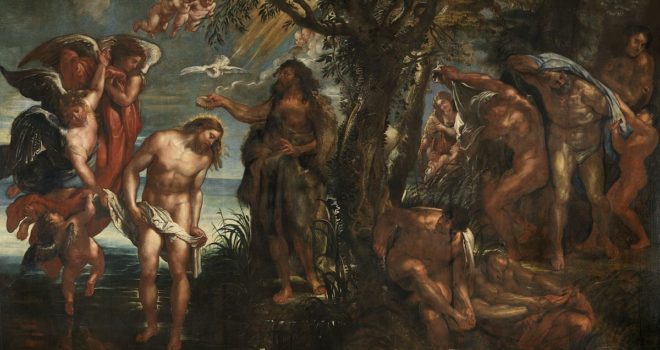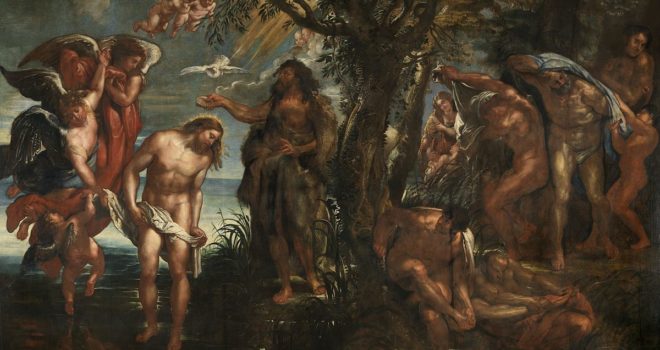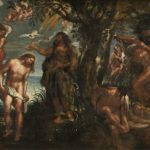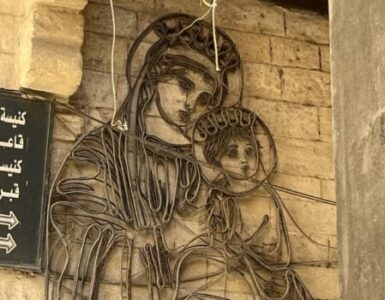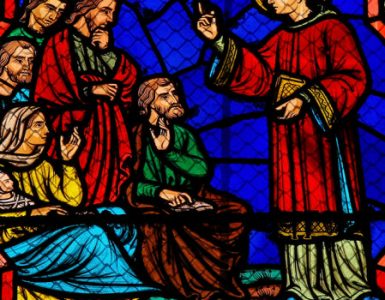Viewing and pondering sacred art offers the faithful a great way to meditate more deeply on the life and ministry of Jesus Christ. This series of articles will highlight several pieces of art related to the Luminous Mysteries of the Rosary, which highlight Our Lord’s public ministry. Each of these pieces of art allows us to reflect on Jesus’ teachings and miracles, connecting them more fully to our own lives.
In his apostolic letter, Rosarium Virginis Mariae (2002), St. John Paul the Great wrote that the Rosary is a “compendium of the Gospel.” As such, it was fitting to add a set of meditations on “certain particularly significant moments in his public ministry,” which had not been part of the traditional devotion previously. Adding this set of mysteries was “meant to give it fresh life and to enkindle renewed interest in the Rosary’s place within Christian spirituality…” (§19). Reflecting on at least one piece of sacred art along with each of these mysteries allows us to deepen our connection with Jesus and His ministry, and to learn how the Kingdom of God is present in our own lives as well (cf. Lk. 17:21).
The First Luminous Mystery is Jesus’ Baptism in the Jordan River, the event that inaugurated the Lord’s public ministry. In the first chapter of St. Mark’s Gospel (verses 9 to 11), we read:
In those days Jesus came from Nazareth of Galilee and was baptized by John in the Jordan. And when he came up out of the water, immediately he saw the heavens being torn open and the Spirit descending on him like a dove. And a voice came from heaven, “You are my beloved Son; with you I am well pleased.
There are many intriguing renditions of this biblical event throughout the history of Christianity. In 1605, the Dutch artist, Peter Paul Rubens, painted one of the most interesting versions, which he titled The Baptism of Christ.
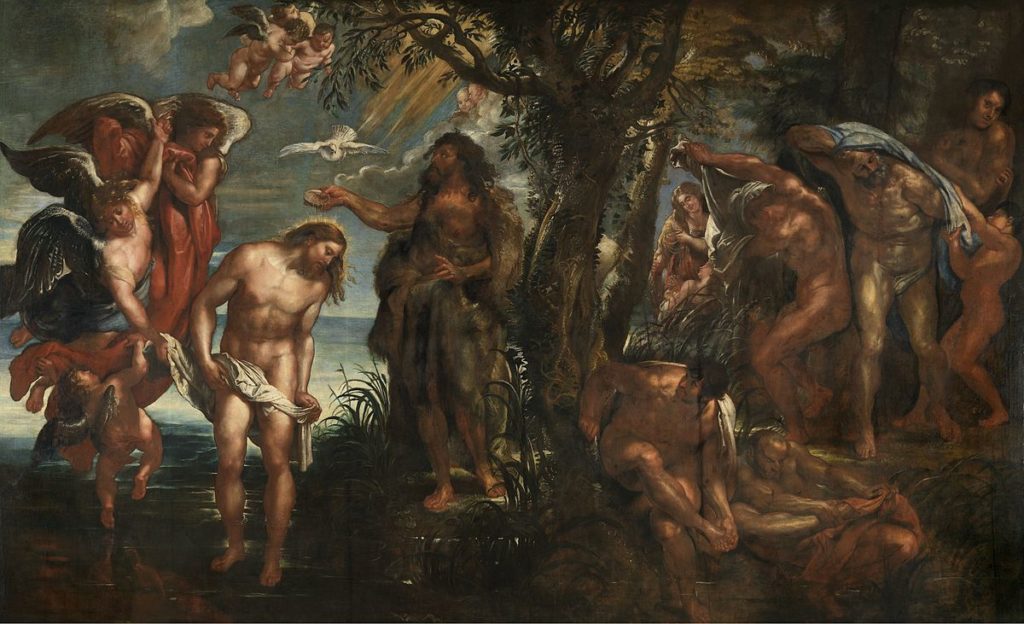
In the center of the painting stands the gruff, bearded John the Baptist, with his arm outstretched to pour water over Jesus’ head. Covering John’s body is the camel-hair garment referenced in Matthew’s Gospel. He stands next to a tree, which could have multiple layers of meaning. It might represent the Tree of Knowledge of Good and Evil, from the Garden of Eden, which was the source of the original sin; and the effects of which Jesus was sent to overcome and undo. It might also reference to John’s warning to the Pharisees and Sadducees: “Every tree therefore that does not bear good fruit is cut down and thrown into the fire” (Mt. 3:10). No matter the particular meaning, this tree provides a dividing point between two halves of the painting.
On the same side of the painting as the Baptist, Jesus stands in the Jordan River, barely wearing a white garment. Jesus is more radiant than any other figure in the painting, which causes viewers to ponder what might be the greatest lesson from this piece of art. We are reminded of the words of St. John in his first letter: “God is light and in him is no darkness at all” (1 Jn. 1:5). This bit of divine revelation ought to tell us, first, that the light and radiance of Jesus Christ surpasses anything else that we can know in life. Then, we might begin to ask how we can participate in the divine light that Jesus brings; how we can push back the darkness that tries to envelop our lives.
Directly above Jesus’ head and John’s baptizing hand is a dove, the symbol of the Holy Spirit that was recorded by each of the four Gospel authors. This dove alights at the end of rays of light that pour forth from the open heavens. At this moment in the biblical text, we hear that “a voice from heaven,” clearly the voice of the Heavenly Father, made a crucial proclamation: “You are my beloved Son; with you I am well pleased.” This statement must be foundational in the life and spirituality of every disciple and seeker. All of us are God’s beloved children, particularly those of us who have received the Sacrament of Baptism. By this very fact, God is pleased with us. We might sin, even stray far from divine life in the Church, but God is infinitely pleased that each baptized person has been brought into the potential life-giving relationship through this foundational sacrament.
Around Jesus and above St. John are a host of angels. As a viewer gazes at this part of the scene, she is quickly reminded of the “multitude of the heavenly host praising God” at the first great epiphany, the Nativity of the Lord (Lk. 2:13). The angels closest to Jesus seem to be helping Him shed the white garment that He wore before the Baptism; and they seem to be ready to place on Him the red garment of sacrifice. Of course, we know that Our Blessed Lord wore both of these garments perfectly. This might cause viewers to ask how they wear these two garments of Christianity in their own lives.
Finally, behind the Baptist on the other side of the tree, we see a number of shadowy figures, including some that seem almost demonic. Most of them are unclothed and seem to be drying off after their own baptisms. Only one of the figures looks at Jesus, while the others continue about their basic tasks of getting dressed or fixing hair. This detail offers each viewer the opportunity to ask a probing question: After my own Baptism, am I focused on Jesus or am I merely going about my distracted business? Do I continue to connect with Jesus via the graces that He has offered to me in Baptism? Too many times in this author’s life, the answer has been in the negative.
The scene that Rubens painted is one of the most memorable depictions of the event that inaugurated Jesus’ public ministry. It is memorable specifically because the light that Jesus carried into the world is a central theme. It is memorable also because it causes viewers to ask where they stand in relation to Jesus’ ministry, how they are receiving or rejecting the light that the Lord brings. Ultimately, it causes each of us to recognize whether, and to what degree, we are becoming the children that the Heavenly Father wants us to become; to assess whether we are really pleasing God by our daily lives.


